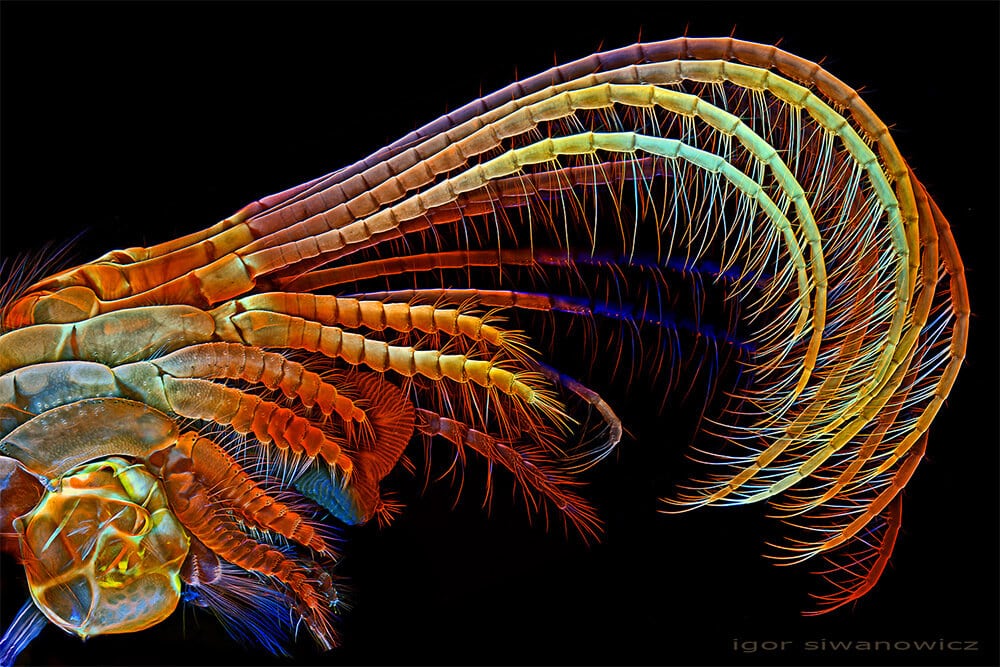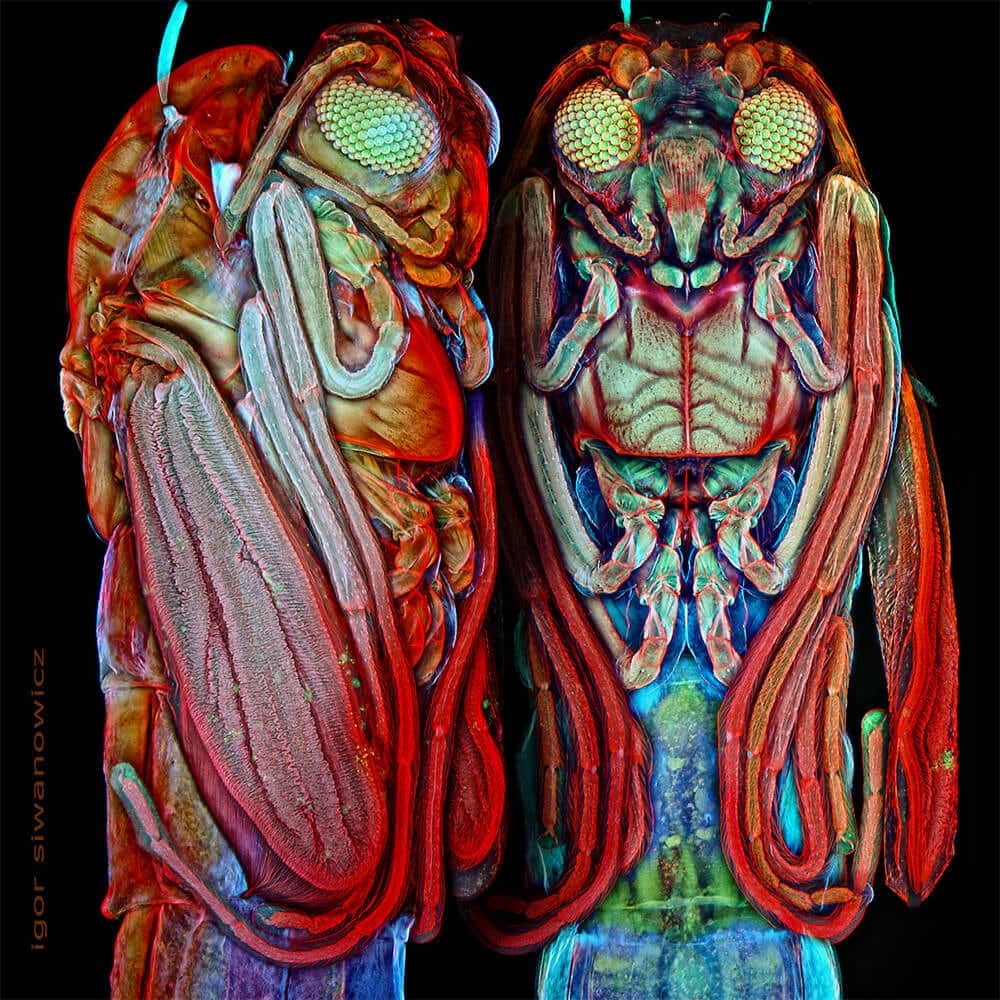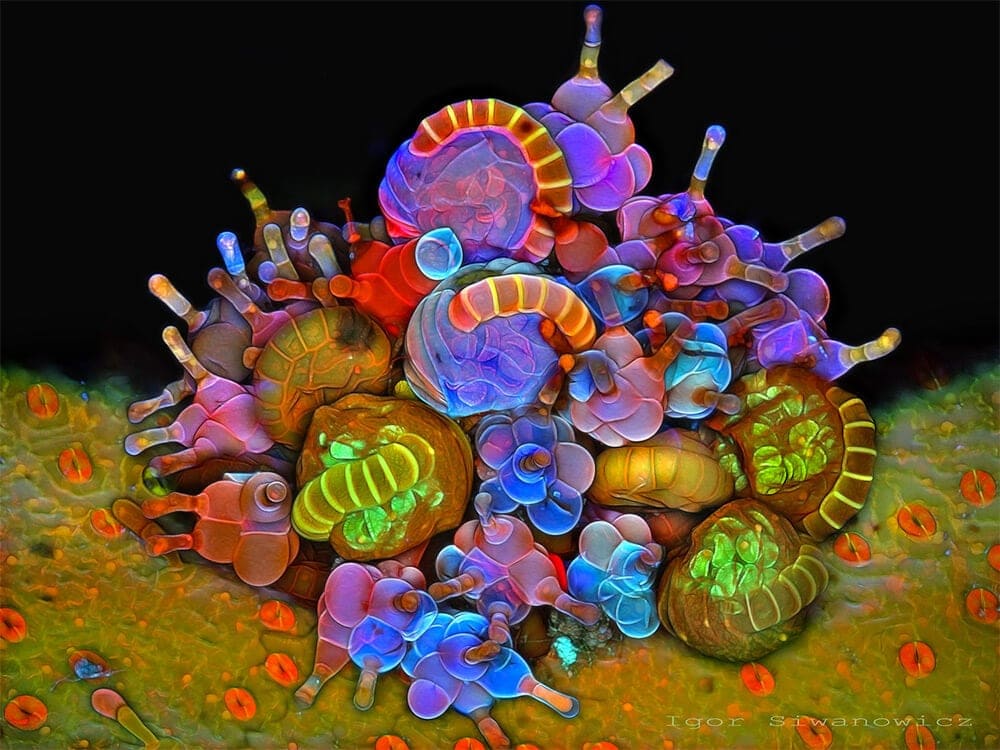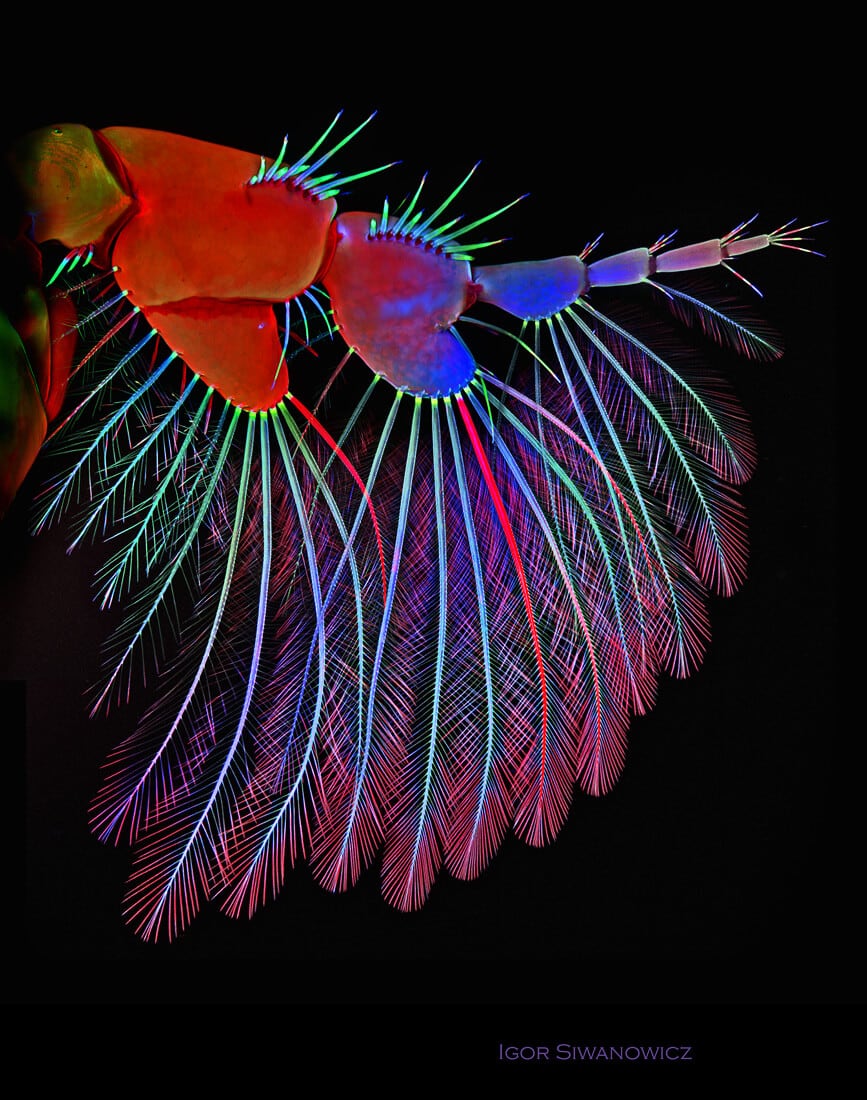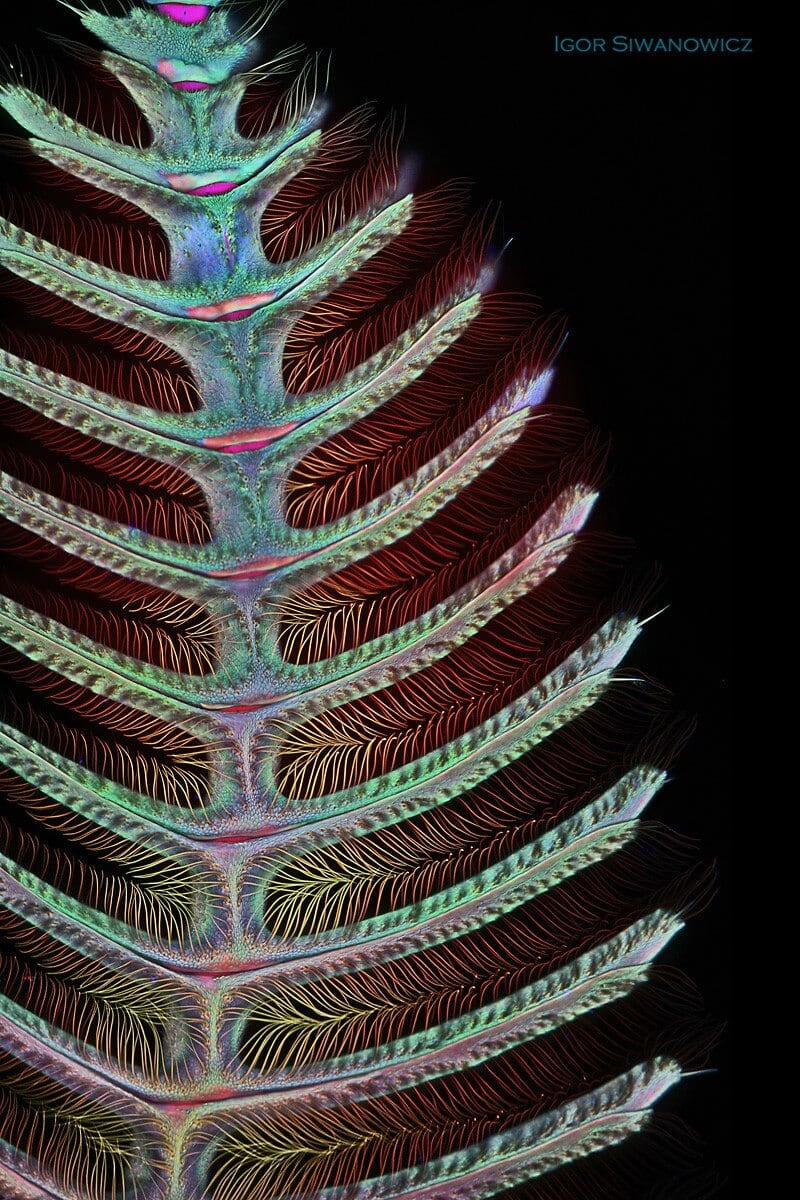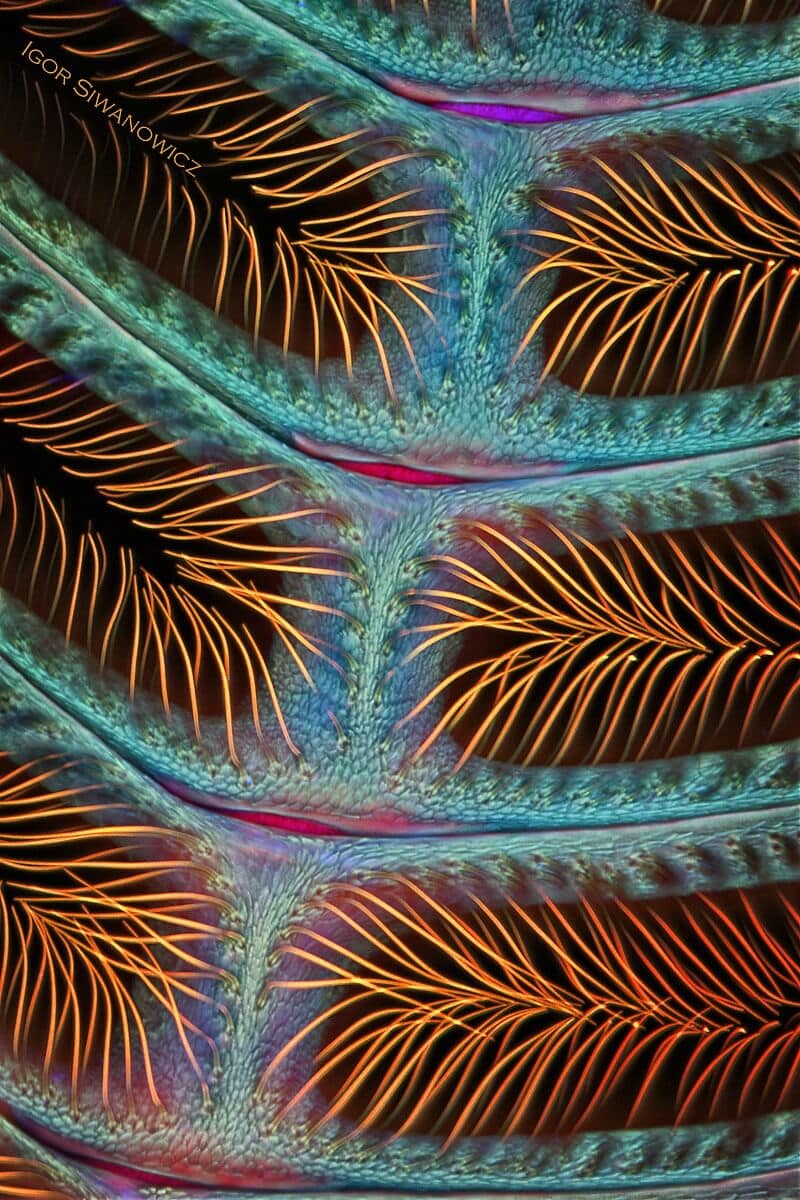If you’ve ever questioned how a diving beetle swims through the water or manages to hold on the surface, the answer is in part because its foot is very complicated than your own. As seen above, this microscopic image of a male Acilius sulcatus (diving beetle) by photographer Igor Siwanowicz shows the remarkable complexity of this aquatic insect’s tiny attachment. This is just one of many cases of Siwanowicz’s work as a neurobiologist at the Howard Hughes Medical Institute’s Janelia Farm Research Campus. His cleverly colored photographs show the tree-like structures of moth antennas, the wild aspects of barnacle legs, and the otherworldly shapes of plant spores. The photos are made with a confocal laser-scanning microscope capable of “seeing” huge amounts of detail beyond what you might achieve with a traditional lens-based microscope.
via Synaptic Stimuli
